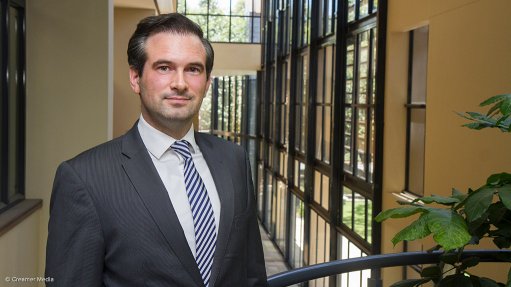
World Bank senior economist Marek Hanusch
Photo by: Duane Daws
The World Bank says raising private investment in South Africa will be critical to increasing the country’s growth potential above its current estimate of only 1.3%, which is well below the National Development Plan’s (NDP’s) aspiration of 5.4% a year.
In its ninth South Africa Economic Update, the bank forecasts that the country will grow by just 1.1% in 2017, after expanding by a projected 0.4% in 2016.
However, senior economist Marek Hanusch stresses that South Africa will not escape a “soft recovery”, despite having reached a trough in the business cycle in 2016, unless it is also able to attract investments that expand the productive capacity of the economy and raise its growth potential.
In the absence of foreign and domestic fixed investment, South Africa will also not reduce unemployment, which climbed to a 13-year high in 2016, or achieve the NDP’s goals of eliminating extreme poverty and reducing income inequality by 2030. Owing to the country’s weak economic performance since the publication of the NDP, South Africa is falling chronically short of its goal of creating 600 000 new jobs a year.
“If we don’t get this investment, we don’t get an increase in potential growth, or the productive capacity of the South African economy. And that is what we need to raise if we want to make a more permanent dent in unemployment,” Hanusch argues.
Direct and portfolio investment declined for five of the last six quarters, while foreign direct investment was negative during the first half of 2016.
Amid serious political and policy uncertainty, much South African wealth has also been shifted abroad, with the net international investment position rising to a record R639-billion in December 2015, after President Jacob Zuma fired Finance Minister Nhlanhla Nene. “This means that a lot of capital is sitting abroad and if we manage to get the fundamentals of the economy right and improve the business environment, then this money can also come back and create jobs at home.”
DOWNGRADE COSTS
A recovery in direct investments and growth are also held up by the bank as critical to South Africa’s ongoing efforts at staving of a downgrade to junk, with Fitch joining Standard & Poor’s in December in putting South Africa on a negative outlook. It also calculates that, had South Africa been downgraded in 2016, the effect would have been a 60 basis-point increase in short-term borrowing costs and a percentage-point fall in growth, which would have made each South African R1 000 poorer and pushed 160 000 people into poverty.
To address the domestic constraints to investment and growth the bank says South Africa should focus on making industrial policy more effective, address infrastructure bottlenecks, improve education and skills, strengthen labour relations, deal with competition and regulatory shortcomings and reduce policy uncertainty.
However, it also believes that there is an opportunity to reorient its investment tax incentives towards high productivity sectors to increase the investment and job creation effects of the schemes.
In an analysis of South African Revenue Service records on the incentives to 300 000 firms between 2006 and 2012, the bank has found that revenue foregone in sectors such as finance, mining, electricity and transport, failed to yield returns in the form of new investments or job creation.
Therefore, it argues that these resources should be redirected to sectors, such as agriculture, manufacturing, construction, trade and other services, including health and education, which are more responsive to meeting the objectives of investment and job creation.